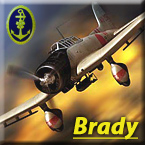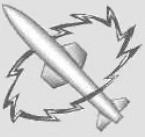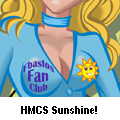Caranorn
Posts: 424
Joined: 8/31/2001
From: Luxembourg
Status: offline

|
1) I'm not sure why Indian army field artillery regiments (independent or in brigade groups or divisions) seem to be listed with 18 guns. When organised as 2 batteries they would logically have 16 guns, with 3 batetries 24. Unless of course the Indian units in the Pacific differed greatly from those in the Medditeranean (Joslen clearly states Indian unit's with 24 x 25 pdr.).
2) Again unless there was a significant difference between Europe and the Pacific, British style (British, Indian, ANZAC etc.) field artillery regiments should have only one type of guns (18pdr., 18/25pdr. (not sure how those were really called, probably not used in Asia anyhow) and 25pdr.). The 4.5" was not used in field regiments.
3) Medium artillery regiments used a mix of 5.5" and 4.5" guns, probably 4 x 5.5" and 12 x 4.5" (4 x 4 gun batteries).
4) I noticed British style units tend to upgrade to 76mm AT, some units might have used these (I could imagine Australian militia units), but usually the upgrade should be 2pdr., 6pdr. (possibly two variants to reflect the serious upgrades in 1944) and 17pdr. The 6pdr. (unlike the US 57mm AT) is actually a better gun then the US 76mm AT. The 17pdr. (not sure it was used in Asia, it would have been quite akward due to it's size) would obviously have been much better yet.
5) As some others have mentionned (I have not managed to read all the OOB posts yet), the Indian army generally had one British battalion attached (integral part) to their brigades. So an Indian Army brigade (this includes Burmese and Malayan units) usually had two "native" battalions and one British. In game this should be reflected as British squads. This was not just the case for Infantry brigades, but also armour and tank (though there it would be hard to reflect the different nationality). British artillery regiments also served with the Indian army (probably reflected by the independent regiments in game, though I feel that's a less then ideal way to represent it).
6) ANZAC (or Canadian) warships should not be penalized when compared to RN ships. That means any ANZAC cruisers or destroyers that served against Germany or Italy earlier in the war should have similar experience to RN ships (Achiles comes to mind, she should have slightly better crew ratings then Exeter).
7) ANZAC and Dutch ships newly arriving in the theater of operations should probably arrive at Karachi and not in their home countries. This obviously does not include newly built (in Oceania) units.
8) Same applies to ANZAC LCU's arriving from outside the Theater of Operations.
9) HMS Victorious should start at San Fransisco like US ships (iirc she was repaired in the US and then served with the US fleet).
10) All Empire air, land and naval units should use the same syntax rules (most noticeable differences are with air units).
These are just a few preliminary notes. I'm much more used to the ETO or the Middle East and North Africa. I can back up some of the above notes via source material, particularly Joslen's (the official British and Empire (not including dominions and India) order of battle. I think the AT, AA, armour and tank TOE's for Empire units are also incorrect in WitP (again I can get the exact values from Joslen's, while ETO units tended to have more material, the theoretical maximal equipment would seem like the logical benchmark to use in a strategic game). I can also look up US material (but then I do assume others can do the same).
Marc aka Caran...
P.S.: Not sure WiE's OOB is worked on currently. If it is and you want a hand email me, I can work on British (Joslen's, Victory in the West etc.) and German (Verbande und Truppen...) land forces with ease. I could also take a look at the US (Stanton and one or two others) army OOB. French I only have incomplete data etc. (Belgian, Dutch, Commonwealth and allied under British or French command etc., oh and of course Italian).
|
 Printable Version
Printable Version









 )
)















 ) I just happened to notice that the Mississippi's guns were 14"/45s when I was looking at her flak, but I thought I remembered their being 14"/50s in Seekrieg 4. So I did some research on the web and found out that Seekrieg 4 was correct. So if anyone gives you a hard time about that one, you can just blame it on me for falling down on the job of fact-checking.
) I just happened to notice that the Mississippi's guns were 14"/45s when I was looking at her flak, but I thought I remembered their being 14"/50s in Seekrieg 4. So I did some research on the web and found out that Seekrieg 4 was correct. So if anyone gives you a hard time about that one, you can just blame it on me for falling down on the job of fact-checking. 
 ]
]

 New Messages
New Messages No New Messages
No New Messages Hot Topic w/ New Messages
Hot Topic w/ New Messages Hot Topic w/o New Messages
Hot Topic w/o New Messages Locked w/ New Messages
Locked w/ New Messages Locked w/o New Messages
Locked w/o New Messages Post New Thread
Post New Thread